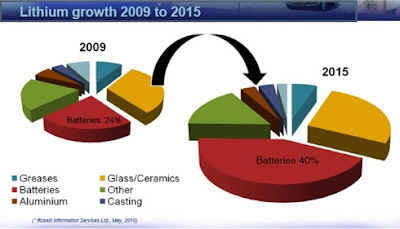Tenaga Nasional Berhad is the only company in Malaysia
which supplies electricity to households. The company remains as the only
electricity supplier direct to consumer, because to start such a monopoly
business as TNB will require a company to invest a huge amount of capital. A huge
capital is needed mainly for the start-up of power plants with high electric
capacity of megawatts.
.jpg) |
| Manjung Coal Power Plant |
Why is it that TNB the only company that supplies
electricity to household? Even if other companies where to start an electricity
supplying company same as TNB, assuming they have more than enough capital. So
why can’t they start the company? It would be because of legal barrier to entry
of patents or/and licenses own by TNB. In this case it would be license that
TNB have gotten from the government to operate the business. Thus, having just
one company to supply electricity to consumers will help maintain a healthy
market.
As an example, we now assume there are two companies
supplying electricity in Malaysia TNB and Hew Electricity Berhad; having two
companies to choose from for consumers, it is definite that consumers will most
likely make a decision based on which company can offer a cheaper price.
Furthermore, not just price will be the issue but number of power plants will
also increase in the country, which will lead to the increase of transmission
towers, what’s worse is how will they direct the cables to each household who
chooses different suppliers. In order to resolve these issues, the government
have given the license to only TNB to operate this business. This helps limit
the entry into the industry by using license, and these is why monopoly
industry have extreme barriers.
Nonetheless, a government directive is also part of barriers
to entry a certain industry, but for monopoly the government have set it is as a consequence of imposition of regulation
that makes entry of new firms unattractive or almost impossible.
In addition, TNB has ownership on the scarce raw
materials and this plays a part in making an effective barrier to entry with no
other firms having access to the scarce inputs to produce their output. So, if a
certain production requires a particular input, and the single firm which owns
the entire supply of the input, the firm will have complete control in the
industry. In this case TNB have access to coal, which is the cheapest raw
material used to generate electricity here in Malaysia.
Moreover, a single firm should be in this industry to
keep the production cost from increasing, if there were more than one firm in
this industry it will contribute to a higher price in coal. Than the coal
supplier will sell the coal at a higher price, because coal is a scarce
resource by selling it at a higher price will contribute to the increase of
production cost.
 |
| Monopoly Profit Maximization |
Based on the graph where production at the Marginal Revenue
(MR) = Marginal Cost (MC) output. In order for the company to obtain maximum
profit, the price must be set at the point coloured blue, where it touches the
demand curve and must be above the Average Total Cost (ATC). If TNB remains a
monopoly in this industry it will be able to make supernormal profits
indefinitely.
Recently in the 4th quarter TNB had
made a RM 1bil profit, they had a better turnover compared to the previous year
in the same quarter where they had made a loss of RM338.6mil. TNB’s revenue rose
from RM9.15bil to RM9.33bil this year.
In relation, TNB was able to secure the coal at
a cheaper price. However, TNB had also secured a bid on a new combined cycle
gas turbine plant in Seberang Prai. The new power plant will increase TNB’s
capacity to supply electricity to consumers; this will also lead to higher
profits for TNB in the future. The profits increase due to the efficiency of
the plant, it is able to produce an output of 60 per cent, being able to utilise
the raw materials prices can be kept low.
Since TNB is a pure monopoly this makes the firm a
price maker, so if prices were to be maintained or increase in the future, even
with the new plant up to produce electricity by 2016 at a cheaper rate, TNB
will still be making a higher supernormal profit during that period, which will
boost the company’s income.
Resources:
http://biz.thestar.com.my/news/story.asp?file=/2012/7/17/business/11674208&sec=business
http://www.btimes.com.my/Current_News/BTIMES/articles/20121009214348/Article/index_html
http://www.btimes.com.my/Current_News/BTIMES/articles/20121009214348/Article/index_html


















